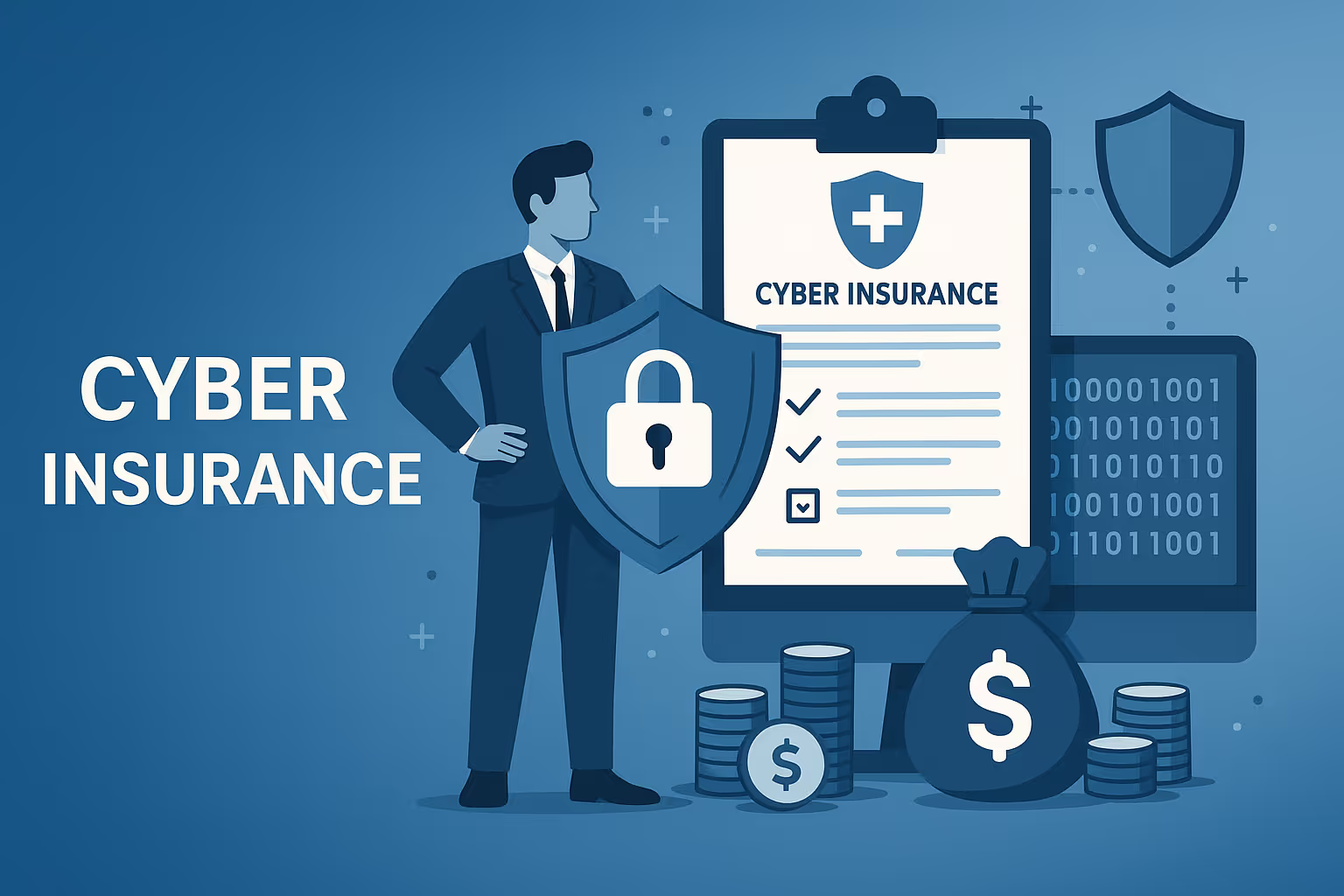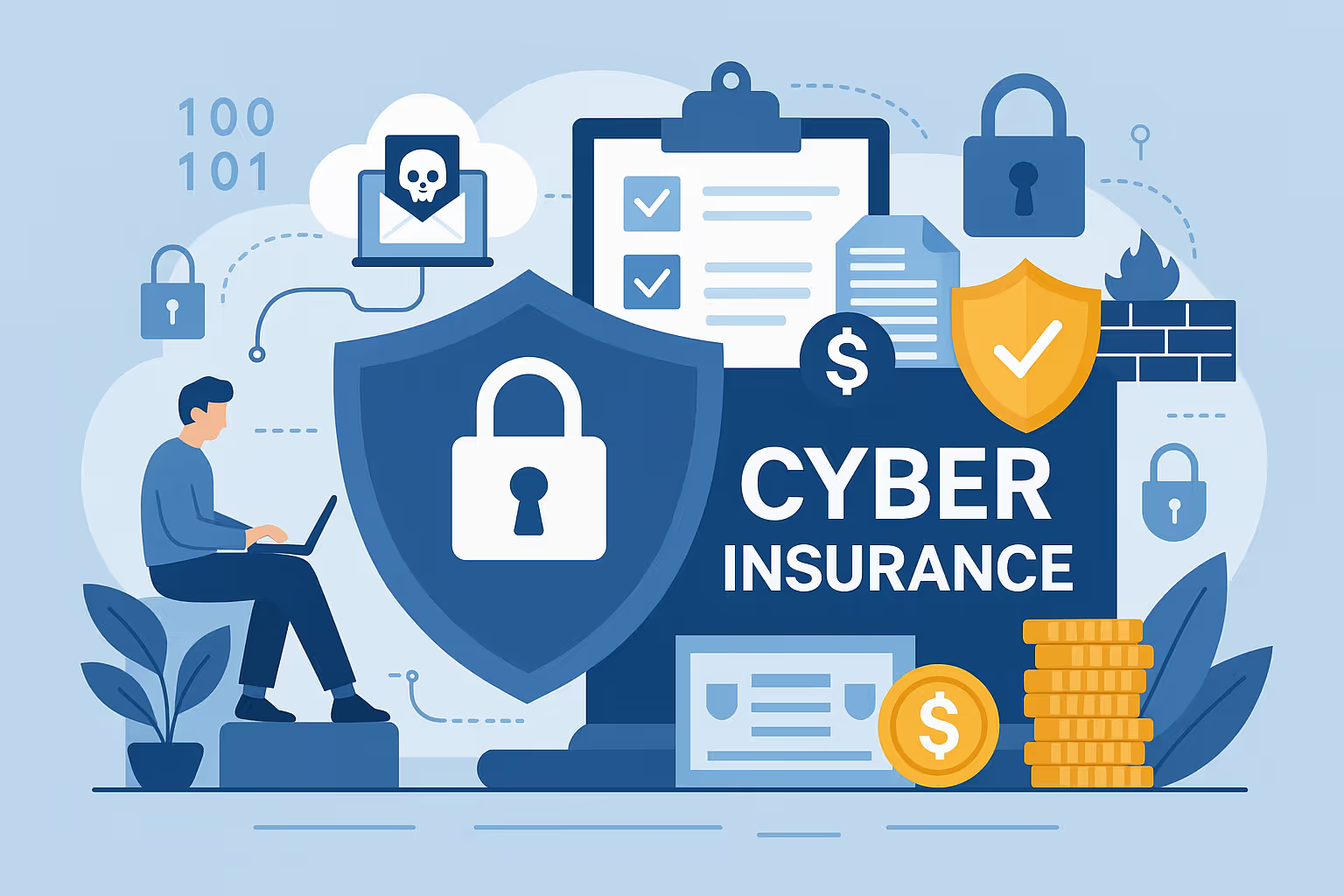
How to get...
For organizations in the United States education sector, understanding how to get cyber insurance for Education is essential. This step-by-step guide walks you through the process, ensuring that you address specific risks, gather required documentation, and complete all underwriting procedures.
Following these steps helps your institution confidently navigate the process of cyber insurance acquisition, ensuring a robust safety net against cyber threats specific to the Education sector.

Who provides...


Why need...
The Education sector in the United States faces unique cyber risks due to its diverse and decentralized networks, which include student data management systems, online learning platforms, and integrated research databases. Institutions often handle vast quantities of personal and financial information, making them attractive targets for malicious actors.
Recent trends have shown increased incidents of ransomware, data breaches, and targeted phishing attacks, especially during remote learning periods. These threats can disrupt academic schedules, compromise sensitive student and staff data, and even result in unauthorized changes to academic records.
For these reasons, cyber insurance for Education in the United States is essential. It covers expenses related to system recovery, legal fees, notification costs, and potential regulatory fines. This insurance aids institutions by mitigating financial losses and helping restore trust in their operations after an incident.
Additional benefits of having cyber insurance for Education include:
Cyber insurance for Education in the United States is not a substitute for robust cybersecurity measures but a critical part of a comprehensive risk management strategy that safeguards both operational continuity and institutional reputation.
Cyber insurance coverage for Education extends to incidents involving unauthorized access or disclosure of sensitive student and staff data. This includes costs associated with breach notifications, forensic investigations, public relations, and legal defense against privacy violation claims.
Cyber insurance coverage for Education provides compensation for lost income and increased operational expenses when a cyber incident disrupts network services, online learning platforms, or administrative systems.
Cyber insurance coverage for Education includes provisions for cyber extortion and ransomware attacks, covering expenses related to negotiation, ransom payments where legally permissible, public relations efforts, and subsequent recovery measures.
Cyber insurance coverage for Education covers legal costs, defense expenses, and penalties arising from regulatory investigations into data security practices, network vulnerabilities, or compliance failures.
Build Security with OCD Tech That Meets the Standard — and Moves You Forward
Contact Us
US schools need robust cybersecurity to safeguard student data. Underwriters review controls & compliance. Meeting standards secures coverage.
Cyber insurance requirements for Education mandate that institutions submit detailed cybersecurity policies and procedures. This includes incident response plans, data breach notification processes, and access control strategies. Insurers use this documentation to assess risk levels, which impacts eligibility and premium calculations based on established frameworks and compliance evidence.
Cyber insurance requirements for Education typically require a strong technical control environment. Schools and universities must demonstrate the deployment of network segmentation, firewalls, encryption protocols, and regular vulnerability assessments. These measures are crucial in reducing potential cyber threats and directly influence underwriting decisions and premium risk profiles.
Cyber insurance requirements for Education necessitate evidence of compliance with regulations such as FERPA, HIPAA (where applicable), and relevant state-specific privacy laws. Compliance verification through audit reports and certifications reassures insurers of the institution’s commitment to data protection, thus affecting eligibility and potentially lowering premiums.
Cyber insurance requirements for Education include a review of past cybersecurity incidents and breach response histories. Institutions need to provide documented evidence of previous incidents, mitigation efforts, and lessons learned. This information helps insurers gauge an institution’s risk exposure and resilience, influencing coverage terms and premium adjustments.
Cyber insurance requirements for Education emphasize the need for comprehensive training and awareness programs for faculty, staff, and students. Documented training schedules, participation records, and effectiveness assessments are essential. These programs demonstrate proactive risk management, often resulting in improved underwriting outcomes and lower premium rates.
Secure Your Business with Expert Cybersecurity & Compliance Today
Contact Us


Differences by State...
These state-by-state differences affect how Education organizations evaluate policies. They should conduct thorough risk assessments, ensure their cybersecurity measures meet regulatory standards, and use state-specific guidance to choose a policy that offers comprehensive protection. By understanding these nuances, institutions can better safeguard sensitive data, manage compliance risks, and optimize their investment in cyber insurance.

Compliance & Frameworks...
In the Education sector, organizations must navigate a complex landscape of regulatory and compliance requirements to secure robust cyber insurance coverage. Robust adherence to frameworks not only mitigates cyber risk but also leads to more favorable underwriting terms and lower premium costs. These frameworks and mandates provide underwriters with assurance that an institution has mature cybersecurity practices in place.
NIST Cybersecurity Framework (CSF)
ISO 27001
Industry-Specific Regulations
State-Level Mandates
These frameworks and mandates play a crucial role in shaping cyber insurance policies because they provide measurable benchmarks for risk management. Insurers often require evidence of adherence to these standards before issuing or pricing cyber insurance for Education, ensuring that institutions have the necessary controls in place. By aligning with cyber insurance for Education best practices, schools, colleges, and universities can improve their eligibility, reduce overall premiums, and enhance the resilience of their cybersecurity defenses.

Audit. Security. Assurance.
IT Audit | Cybersecurity | IT Assurance | IT Security Consultants – OCD Tech is a technology consulting firm serving the IT security and consulting needs of businesses in Boston (MA), Braintree (MA) and across New England. We primarily serve Fortune 500 companies including auto dealers, financial institutions, higher education, government contractors, and not-for-profit organizations with SOC 2 reporting, CMMC readiness, IT Security Audits, Penetration Testing and Vulnerability Assessments. We also provide dark web monitoring, DFARS compliance, and IT general controls review.
Contact Info
.svg)
OCD Tech
.svg)
25 BHOP, Suite 407, Braintree MA, 02184
.svg)
844-623-8324
.svg)
https://ocd-tech.com
Follow Us
Videos
Check Out the Latest Videos From OCD Tech!
Services
SOC Reporting Services
– SOC 2 ® Readiness Assessment
– SOC 2 ®
– SOC 3 ®
– SOC for Cybersecurity ®
IT Advisory Services
– IT Vulnerability Assessment
– Penetration Testing
– Privileged Access Management
– Social Engineering
– WISP
– General IT Controls Review
IT Government Compliance Services
– CMMC
– DFARS Compliance
– FTC Safeguards vCISO